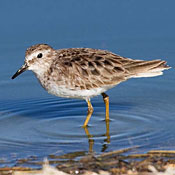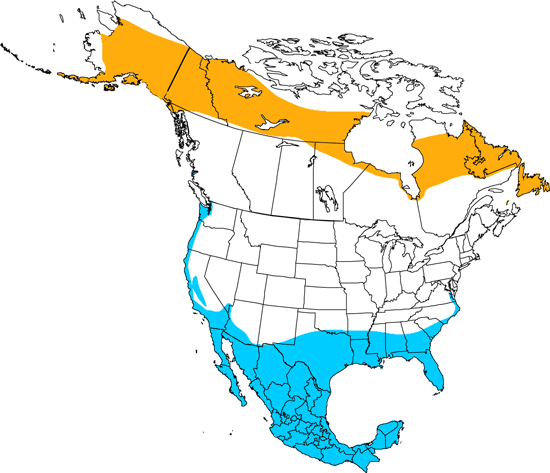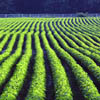Least Sandpiper
Calidris minutilla

Sandpiper Like

Length: 6 in. (15 cm )
In the Southwest this small sandpiper is usually found in flocks during the winter and in migration. It is restricted to muddy flats and moist grassy areas where they run together and fly in tightly coordinated flocks that zig and zag across the water. On its breeding grounds in the Arctic, its grassy nests are located on elevated tundra near water. They eat insects and invertebrates probed from mud. Some individuals winter as far south as northern South America.
The four-digit banding code is LESA.
Bibliographic details:
- Article: Least Sandpiper
- Author(s): Dr. Biology
- Publisher: Arizona State University School of Life Sciences Ask A Biologist
- Site name: ASU - Ask A Biologist
- Date published: 13 Jul, 2017
- Date accessed: 24 July, 2025
- Link: https://askabiologist.asu.edu/activities/bird/least-sandpiper
APA Style
Dr. Biology. (Thu, 07/13/2017 - 15:38). Least Sandpiper. ASU - Ask A Biologist. Retrieved from https://askabiologist.asu.edu/activities/bird/least-sandpiper
Chicago Manual of Style
Dr. Biology. "Least Sandpiper". ASU - Ask A Biologist. 13 Jul 2017. https://askabiologist.asu.edu/activities/bird/least-sandpiper
MLA 2017 Style
Dr. Biology. "Least Sandpiper". ASU - Ask A Biologist. 13 Jul 2017. ASU - Ask A Biologist, Web. https://askabiologist.asu.edu/activities/bird/least-sandpiper
Be Part of
Ask A Biologist
By volunteering, or simply sending us feedback on the site. Scientists, teachers, writers, illustrators, and translators are all important to the program. If you are interested in helping with the website we have a Volunteers page to get the process started.






